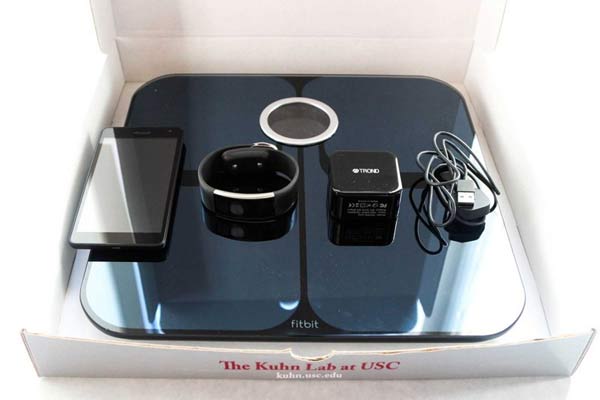For a very long time cancer has been a nightmare for many families across the globe. For individuals who have cancer, it can be difficult to cope with the thought at first. However, knowing that there is a technology out there that will assist ease their condition may help individuals deal with this stressful time of their lives. There are several ongoing types of research that are being conducted with different bodies. These research will possibly be forthcoming and assist in the treatment and ultimately find a cure for the disease.
Bringing Brains Together
During a White House event held on October 3rd, a team of researchers from the University of Southern California made a demonstration on how the use of both smartphones and wearable technology can potentially improve the treatment of cancer. The South by South Lawn (SXSL), a festival of art, action and ideas held at the White House is a gathering that is motivated by South by Southwest. This festival brings innovators, organizers and creators together in order to work towards improving the lives of people all over the world.
From Subjective to Objective Observation
Among the major participants of the cancer moonshot exhibit that was championed by Joe Biden, the Vice President, was the USC project. The researchers were aiming to offer doctors real-time patient data that would come from patient reported experience and wearable technology so that medical practitioners may base their treatment assessments on objective measures instead of episodic or subjective observations. The project is referred to as ATOM-HP (Analytical Technologies to Objectively Measure Human Performance)
Progress Made by Researchers
The managing director, co-lead researcher of ATOM-HP, A. Professor of Clinical Medicine (Keck Medicine of USC), Jorge Nieva stated that this kind of approach will form a safety net for the patients experiencing a difficult moment with cancer treatment. According to Nieva utilizing this technology in observing the experience of cancer patients while at their home, improves the impact of therapy by simply making it evident in analytic form or doctors. From a glance, you can view the days which the patient spent in bed, the kind of impact the treatment had in their lifestyle and at times see the periods when some intervention was necessary before the condition could get out of hand.

At the moment cancer treatment is being based on the episodic encounters patients have. Even while having chemotherapy patiently often see their doctors for about 8-10 mins after every three weeks stated Peter Khun, a medical professor and ATOM-HP co-lead researcher. Khan says that a lot of time in between visits indicates missed opportunities. However, technology can be leveraged to take care of the gap and provide an all-inclusive picture. The already gathered data may lead to good treatment decisions a good understanding between patients and physicians and better survival rates.
The ATOM-HP Initiative
ATOM-KP is an initiative meant to get collaborators together from Keck School of Medicine, USC Viterbi School of Engineering, USC Jimmy Iovine and Andre Young Academy and USC Norris comprehensive cancer center.
Michael Quick, a USC provost, mentioned that as an institution they are making progress on several fronts in order to deal with cancer crisis. Researchers, faculty, and students from all disciplines are all working synergistically to be able to fast track detection of cancer and possibly find a cure. This convergence will definitely have a positive impact in dealing with this devastating disease.

ATOM-HP provides real-time data that has a high chance of fast tracking cancer research. According to Khun, solving the cancer problem has been challenging as a result of the limited timely information. Often the analyses of cancer data become available some years after the information has been collected. With access to real-time data, chances of fast tracking cancer research will increase, thus proving valuable to scientists.
SXSL festival, which was a collaborative effort with the president’s committee of arts, south by southwest, American Film Institute and the National Parks Foundation has definitely played a significant role towards dealing with the cancer problem.
ATOM-HP
TOM-HP project comes about as a result of the joint effort between the US Department of Defense’s Rapid Response Technology Office and the National Cancer Institute’s Center for Strategic Initiative. The USC researchers aspire to improve the lives of people battling with cancer and are undergoing treatment in order to boost the chances of survival for these patients. As war fighters, these patients suffer from duty-induced fatigue or treatment, which impairs their capacity to perform or survive. The basis of fatigue may be dissimilar but the measurement approach is alike.
Also Read: Listening Using Your Skin Rather Than Your Ears
Conclusion
Researchers have finally been able to demonstrate how the use of smartphones and wearable technology can improve the treatment of cancer. The aim of these researchers is to offer real-time data of patients to doctors with the help of the wearable technology. This advancement will definitely help deal with this devastating disease. The positive thing is that efforts are being made towards curbing the cancer problem and probably in just a matter of time a solution will be available.


